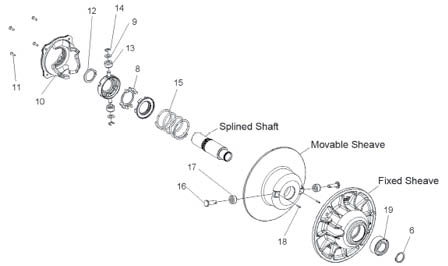Why didn't the manufacturers just build their UTVs with the better setup to begin with? The answer is they could, but they need the vehicle to work in many conditions from mud to sand to sea level to 12,000 feet in altitude. The manufacturer has to use a general setup in order to make the vehicle work wherever it is sold.
Polaris does recommend that the customer change some of the parts to make the vehicle work at its "optimum" for the customer's preferred conditions. The company usually gives the customer a specification sheet of what parts to use, but  it really only takes into consideration riding elevation.
it really only takes into consideration riding elevation.
There are so many other factors that affect the calibration, which is why it is important to understand these factors and the workings of the CVT.
What makes up a CVT clutch?
If you're new to the CVT transmission you might be thinking, "Well this is all fine and dandy but I don't have a clue how this thing works, what parts to change or  how to change them." The purpose of this article is to answer those questions and help take you to the next level. If you have been around CVT clutches before, this could be a good refresher.
how to change them." The purpose of this article is to answer those questions and help take you to the next level. If you have been around CVT clutches before, this could be a good refresher.
A CVT consists of two variable clutches connected together with a high strength belt. Each clutch has two tapered sides or sheaves that keep the belt centered. One sheave is fixed to the shaft and does not move while the other one moves in and out, forcing the belt to a higher or lower position in the clutch. This allows the CVT to have a low gear ratio and a high gear ratio with an infinite number of ratios in between, which gives it the ability to keep the engine rpm in its optimum power output range for all operating conditions. But what makes the clutches move or "shift?" The answer is the centrifugal force.
Primary Clutch

